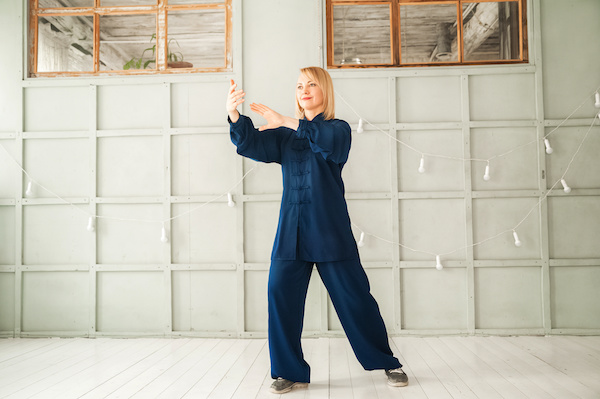While not everyone is diagnosed with Generalized Anxiety Disorder, we all feel anxious on occasion. The frequency and intensity of anxiety symptoms can vary between individuals, but many interventions can effectively manage symptoms and among these is Qigong, an Eastern practice similar to Tai Chi.
Why Exercise Helps Anxiety
Anxiety is, in its simplest form, an emotional and physiological response to real or perceived danger. When confronted with danger, humans respond with “fight, flight, or freeze.” The body readies for action, and the brain delivers chemicals to ensure the body will have enough energy to survive the fight, flight, or freeze response. In cases of anxiety where there is no immediate threat, no immediate action is taken and the excess energy remains in the body, causing physical and emotional discomfort. Exercise releases the energy produced by the fear response and allows physical and emotional symptoms to resolve.
Qigong as a Form of Exercise
Qigong is an ancient practice consisting of smooth, rhythmic movements which can be accomplished by individuals of most fitness levels. Movement of the body reduces symptoms of anxiety, as mentioned above, promotes improved sleep, and improves overall health. Unlike other forms of exercise, such as running or aerobics, Qigong is focused on calming. Routines may relieve tension in the neck, back, shoulders, and chest–common problem areas for those suffering from anxiety.
Qigong as a Holistic Solution
Paired with good posture, deep breathing is a technique used in Qigong to promote overall calm. This coincides with approaches of mental health professionals in treating anxiety. One common symptom of anxiety is repetitive or looping thoughts. While repetition is an inherently soothing behavior, the looping thoughts associated with anxiety are almost always unpleasant. Qigong transforms the looping thoughts into repetitive motion, allowing the practitioner to maintain a rhythm without revisiting a fear-inducing cognition.
Feelings of anxiousness are common, especially in our fast-paced world. Some treatment techniques target physical symptoms while others focus on the associated thoughts and emotions. As a holistic approach, Qigong promotes emotional calm while releasing physical tension from common problem-areas. Learning Qigong is accessible to anyone with internet access and practicing it is possible for anyone able to utilize arms and/or legs. Learn more about this practice and how it can benefit your well-being at Seasons in Our Life.

